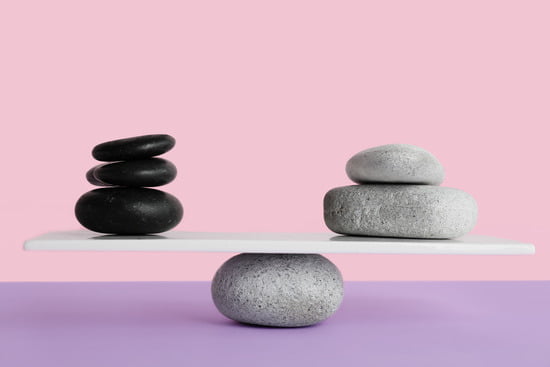The concept of Feng Shui, an ancient Chinese practice, focuses on harmonizing individuals with their environment to promote positive energy and well-being. In the context of the bedroom, Feng Shui principles are essential for creating a space that supports restful sleep and overall tranquility.
One crucial aspect of Feng Shui in the bedroom is the use of colors, which can significantly impact the energy and mood within the space. When it comes to colors for the bedroom Feng Shui, it is important to consider both personal preferences and traditional guidelines to create a harmonious and balanced environment.
The Impact of Colors in the bedroom cannot be understated, as different hues can influence emotions, behavior, and overall wellness. From calming shades that promote relaxation to energizing tones that invigorate the space, each color has its own unique effect on the ambiance of the bedroom. By understanding how colors influence energy flow, individuals can effectively harness their power to create a nurturing and supportive bedroom environment.
Choosing the Right Colors for your bedroom involves a thoughtful analysis of individual preferences as well as an understanding of Feng Shui principles. While personal taste plays a significant role in selecting bedroom colors, aligning them with Feng Shui guidelines can enhance overall well-being by promoting balance and harmony within the space. By incorporating these principles into color selection, individuals can cultivate a restorative and nurturing atmosphere in their bedrooms.
The Impact of Colors
Color plays a crucial role in Feng Shui as it can significantly impact the energy and mood in the bedroom. Each color carries its own energy, symbolism, and psychological effects, making it important to carefully choose the right colors for a harmonious and balanced bedroom environment. Understanding the influence of different colors can help individuals create an optimal space that promotes relaxation, rejuvenation, and overall well-being.
For example, cool colors such as blue, green, and purple are known for their calming and soothing effects. These colors are often recommended for bedrooms as they can promote restful sleep, reduce stress, and create a tranquil atmosphere. On the other hand, warm colors like red, orange, and yellow are considered more stimulating and energizing. While these vibrant hues can add warmth and energy to the bedroom, they should be used sparingly to avoid overwhelming the space.
When considering colors for the bedroom Feng Shui, it is essential to take into account individual preferences as well as the principles of Feng Shui. Personal color preferences can be influenced by cultural background, past experiences, or simply aesthetic preferences. However, it is also important to align these preferences with Feng Shui principles to ensure that the chosen colors support positive energy flow within the space.
| Color Category | Effects on Energy and Mood |
|---|---|
| Cool Colors (Blue, Green, Purple) | Calming and soothing; promotes restful sleep and relaxation |
| Warm Colors (Red, Orange, Yellow) | Stimulating and energizing; adds warmth but should be used sparingly |
Understanding how colors can influence energy flow and mood in the bedroom enables individuals to make informed choices when selecting a color scheme. By considering both personal preferences and Feng Shui principles, it is possible to create a balanced environment that supports overall well-being. In the next section we will discuss tips on how to select the best colors for the bedroom based on individual preferences while also adhering to Feng Shui principles.
Choosing the Right Colors
When it comes to creating a harmonious and balanced bedroom environment, choosing the right colors is essential. In the practice of Feng Shui, colors play a significant role in influencing the energy flow and mood within a space. The selection of colors for the bedroom should take into consideration both individual preferences and Feng Shui principles to create a tranquil and rejuvenating atmosphere.
When selecting colors for the bedroom, it is important to consider personal preferences and associations with certain hues. Some people may find comfort in soft, pastel shades such as light blues, pale greens, or subtle lavenders, while others may prefer warmer tones like gentle yellows, peachy pinks, or creamy neutrals. Understanding the psychological and emotional effects of different colors can help individuals make informed choices that align with their innate sensibilities.
In addition to personal preferences, Feng Shui principles can guide the selection of colors for the bedroom. According to Feng Shui philosophy, each color corresponds to one of the five elements – wood, fire, earth, metal, and water – and has unique properties that can influence energy flow.
For instance, serene blues and greens represent water and wood elements respectively, making them ideal choices for promoting calmness and tranquility in the bedroom. By integrating these elemental associations with individual color preferences, individuals can customize their bedroom color scheme to enhance relaxation and balance in accordance with Feng Shui principles.
Soothing Colors
When it comes to creating a relaxing and serene atmosphere in the bedroom, the choice of colors plays a crucial role. In Feng Shui, soothing colors are believed to promote restful sleep and tranquility, making them ideal for the bedroom environment. Here are some calming and relaxing colors that align with Feng Shui principles:
- Soft Blues: Shades of blue, such as powder blue or sky blue, are often associated with calmness and serenity. These hues can evoke a sense of peace and relaxation, making them perfect choices for bedroom walls or decor.
- Neutral Tones: Earthy neutrals like taupe, beige, or light gray can create a grounding effect in the bedroom. These colors provide a sense of stability and balance, helping to foster a peaceful sleeping environment.
- Lavender: A soft shade of lavender can bring a gentle and soothing energy to the bedroom. This color is often linked to relaxation and tranquility, making it an excellent option for promoting restful sleep.
By incorporating these soothing colors into the bedroom space, individuals can enhance their overall well-being and create a harmonious environment that supports quality sleep. When selecting colors for the bedroom in accordance with Feng Shui principles, it’s important to consider personal preferences while also paying attention to the desired impact on energy flow within the space.
In addition to wall colors, incorporating calming hues through bedding, curtains, and decor elements can further contribute to creating a peaceful ambiance. The goal is to establish a nurturing haven that promotes relaxation and rejuvenation, allowing individuals to unwind and recharge within their bedroom sanctuary.
Energizing Colors
When it comes to choosing colors for the bedroom according to Feng Shui principles, it’s important to consider not only soothing and calming shades but also energizing and vibrant colors that can invigorate and revitalize the space. Energizing colors play a crucial role in creating a balanced and harmonious environment, promoting a sense of vitality and positivity within the bedroom.
One of the most popular energizing colors in Feng Shui is red. Red is believed to be a powerful and passionate color that can stimulate energy, passion, and excitement. However, it’s essential to use red in moderation as an overwhelming amount of this color can lead to restlessness and agitation. Incorporating red accents such as throw pillows, artwork, or a statement piece of furniture can add a dynamic touch to the bedroom without overpowering the space.
Another energizing color option for the bedroom is orange. Orange represents warmth, enthusiasm, and creativity, making it an excellent choice for those seeking an uplifting and cheerful ambiance in their bedroom. Similar to red, it’s advisable to use orange in small doses or opt for softer shades like peach or coral to achieve a balance between energy and tranquility.
In addition to red and orange, vibrant shades of yellow can also bring energy and brightness into the bedroom. Yellow symbolizes joy, optimism, and mental clarity, making it an ideal choice for individuals looking to infuse their living space with vitality and positive energy.
Whether used as an accent wall color or incorporated through decor elements such as bedding or curtains, yellow can contribute to a stimulating yet harmonious atmosphere in the bedroom. Experimenting with different hues of these energizing colors allows individuals to personalize their space while harnessing the revitalizing benefits of Feng Shui principles.
Harmony and Balance
When it comes to creating a harmonious and balanced bedroom, the choice of colors plays a crucial role in aligning with Feng Shui principles. The concept of Feng Shui revolves around the idea of energy flow and balance within a space, and the colors used in the bedroom can greatly influence the overall harmony and tranquility.
In Feng Shui, each color is believed to carry specific energetic qualities that can impact one’s well-being, mood, and restfulness. Therefore, it is essential to carefully consider the color scheme for the bedroom to ensure that it promotes positive energy flow and supports a peaceful environment.
Incorporating colors for the bedroom Feng Shui involves understanding the five elements (wood, fire, earth, metal, water) along with their corresponding color associations. For instance, soft greens and blues are often associated with the wood element and can bring a sense of renewal and calmness to the bedroom.
On the other hand, warm reds and oranges correspond to the fire element and can add passion and vitality to the space. By incorporating these elemental colors in alignment with Feng Shui principles, it is possible to create a balanced color scheme that promotes harmony and balance within the bedroom.
One key tip for creating a harmonious color scheme in line with Feng Shui principles is to avoid using overly stimulating or jarring colors in the bedroom space. Instead, opt for soft and soothing hues that promote relaxation and restfulness.
Additionally, balance is essential when selecting colors for different elements of decor such as walls, bedding, furniture, and accents. By carefully considering these factors along with individual preferences, it is possible to create a harmonious color scheme that aligns with Feng Shui principles while reflecting personal style.
| Color | Associated Element |
|---|---|
| Soft Green | Wood |
| Blue | Wood |
| Red | Fire |
| Orange | Fire |
By paying attention to these factors when selecting colors for the bedroom Feng Shui enthusiasts can create a serene environment that promotes balance energy flow within their personal sanctuaries.
Accent Colors
When it comes to creating a harmonious and balanced bedroom space using Feng Shui principles, accent colors play a significant role in enhancing the overall energy flow and ambiance. Selecting the right accent colors can uplift and transform the atmosphere of your bedroom, creating a more cohesive and positive environment for rest and relaxation.
Strategic Placement
Incorporating accent colors strategically can effectively highlight specific areas of the bedroom, such as the bed frame, decorative pillows, or artwork. By doing so, you can draw attention to these focal points and create a sense of visual interest within the space. Additionally, consider incorporating accent colors in accessories like lamps, curtains, or rugs to infuse subtle pops of color throughout the room.
Complementary Contrasts
Opt for accent colors that complement the main color scheme of your bedroom while adding an element of contrast. For example, if your bedroom features calming blues and greens as primary colors, consider incorporating warm accent colors like coral or mustard yellow to create a visually striking contrast and balance. This juxtaposition can enliven the space while maintaining a sense of harmony and tranquility.
Nature-Inspired Accents
Drawing inspiration from nature can be a great way to select accent colors that promote serenity and peace within the bedroom. Earthy tones like terracotta, sage green, or sandy beige can evoke a sense of grounding and connection to the natural world. Introducing these nature-inspired accents through textiles, plants, or artwork can bring a comforting and rejuvenating energy to your bedroom space.
Color Combinations
When it comes to designing a bedroom with Feng Shui principles in mind, the choice of colors plays a crucial role in creating a harmonious and balanced space. In Feng Shui, different colors are believed to have unique energetic properties that can either promote tranquility and relaxation or stimulate energy and vitality. It is essential to carefully select complementary color combinations that not only align with personal preferences but also enhance the overall energy flow in the bedroom.
One of the fundamental principles of using colors in Feng Shui for the bedroom is the concept of yin and yang, representing feminine and masculine energies respectively. For instance, a well-balanced bedroom color scheme may include a combination of calming yin colors like soft blues, greens, and lavenders, paired with energizing yang colors such as warm reds, oranges, or yellows.
By striking a harmonious balance between these opposing energies, a sense of equilibrium and positivity can be achieved within the space.
Another key consideration when exploring color combinations for the bedroom is the five elements theory in Feng Shui – wood, fire, earth, metal, and water. Each element corresponds to specific colors and attributes that can influence the energy in the room.
For example, incorporating a mix of earthy tones like beige or terracotta for stability (representing the earth element) alongside splashes of white or metallic accents for clarity (symbolizing metal) can create a well-rounded and balanced environment conducive to rest and rejuvenation.
In addition to balancing yin and yang energies and integrating the five elements theory into the color scheme, it is also important to consider personal preferences and individual needs when selecting complementary color combinations for the bedroom. Ultimately, creating a space that resonates with one’s unique style while embracing Feng Shui principles can lead to an environment that promotes balance, positivity, and overall well-being.
Case Studies
The Setting
The bedroom of a busy professional couple in the city, looking for a peaceful retreat after long days at work.
The Colors Used
Soft shades of blue and green were chosen for their calming and soothing properties, in line with Feng Shui principles. These colors were incorporated through the bedding, curtains, and accent decor.
The Impact
The serene color scheme created a restful atmosphere, allowing the couple to unwind and relax more easily. The bedroom became a tranquil oasis, promoting deep and rejuvenating sleep.
Case Study 2: Energizing Retreat
The Setting
A single individual’s bedroom in a suburban home, seeking an energetic and revitalizing space to start each day feeling invigorated.
The Colors Used
Bold pops of red and orange were introduced to bring warmth and energy into the room. These vibrant hues were integrated through artwork, throw pillows, and a statement rug.
The Impact
The dynamic color palette added vibrancy and excitement to the bedroom, creating a stimulating environment that inspired enthusiasm and positivity. The individual felt more energized and motivated in their daily routines.
Case Study 3: Balanced Harmony
The Setting
A family’s shared bedroom in a coastal dwelling, desiring a harmonious space where each member could experience balance and tranquility.
The Colors Used
A combination of soft neutrals such as beige and ivory was employed to achieve a sense of balance and neutrality. Accents of pale pink were included to promote tenderness and affection within the space.
The Impact
The harmonious blend of colors fostered an atmosphere of peace and unity within the bedroom. Each family member felt interconnected while also enjoying personal comfort within this balanced environment.
These real-life case studies demonstrate how incorporating specific colors into the bedroom can influence energy levels, mood, and overall well-being according to Feng Shui principles. By choosing the right colors based on individual preferences while considering these ancient Chinese practices, one can create a harmonious sanctuary that promotes restful sleep, vitality or balance within their living space.
Conclusion
In conclusion, the concept of Feng Shui plays a crucial role in creating a harmonious and balanced environment in the bedroom. By understanding the impact of colors on energy and mood, individuals can effectively utilize this ancient practice to enhance the overall ambiance of their sleeping space. Whether it is selecting soothing colors for promoting restful sleep or choosing energizing colors to invigorate the atmosphere, the power of color in Feng Shui cannot be underestimated.
When it comes to choosing the right colors for the bedroom, it is essential to consider individual preferences as well as Feng Shui principles. By incorporating calming and relaxing colors such as soft blues and gentle greens, individuals can create a tranquil and serene atmosphere that promotes relaxation and rejuvenation. Moreover, incorporating vibrant and energetic colors like passionate reds or sunny yellows can inject vitality and dynamism into the bedroom space.
In essence, creating a harmonious color scheme based on Feng Shui principles can significantly impact one’s well-being and quality of sleep. By carefully selecting accent colors that enhance energy flow and incorporating complementary color combinations that promote balance, individuals can transform their bedrooms into soothing sanctuaries that promote peace and positivity.
Ultimately, embracing the power of colors in Feng Shui for the bedroom allows for a deeper connection to one’s living space while nurturing a sense of harmony and balance within.
Frequently Asked Questions
What Color Is Good Feng Shui in a Bedroom?
Good Feng Shui in a bedroom often includes soft, soothing colors such as light blues, greens, and lavenders. These colors are believed to promote a sense of calm, relaxation, and harmony within the space.
What Is the Lucky Colour for Bedroom?
The lucky color for a bedroom can vary based on individual beliefs and cultural traditions. In Feng Shui, the lucky colors for a bedroom often include shades of pink for love and romance, light blue for tranquility, or even earthy tones like terracotta for grounding energy.
What Is the Most Positive Color for Bedroom?
The most positive color for a bedroom is often considered to be a soft, peaceful shade that promotes relaxation and restful sleep. Light neutral colors like beige or pale yellow can create a serene atmosphere, while gentle greens and blues are also popular choices for bringing a sense of tranquility to the space.

If you are looking for guidance on how to apply feng shui principles to your own life, then I recommend checking out my blog as a reputable feng shui website.





